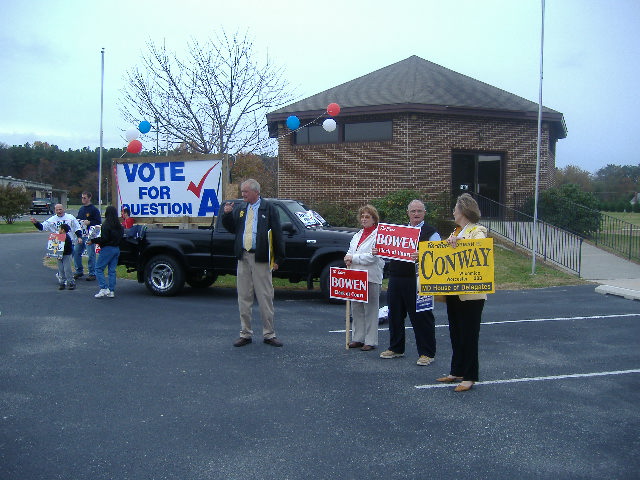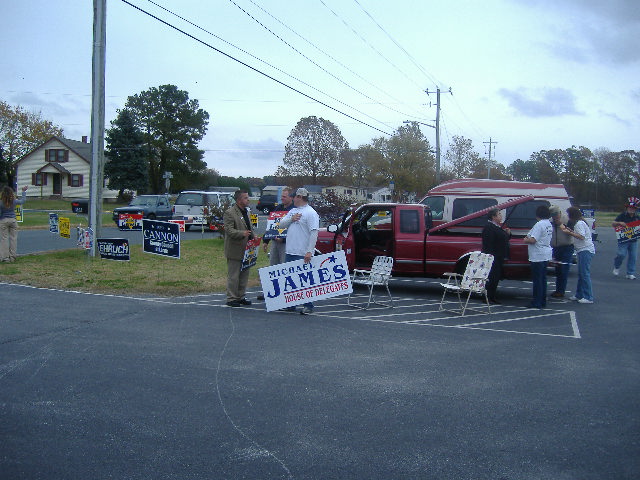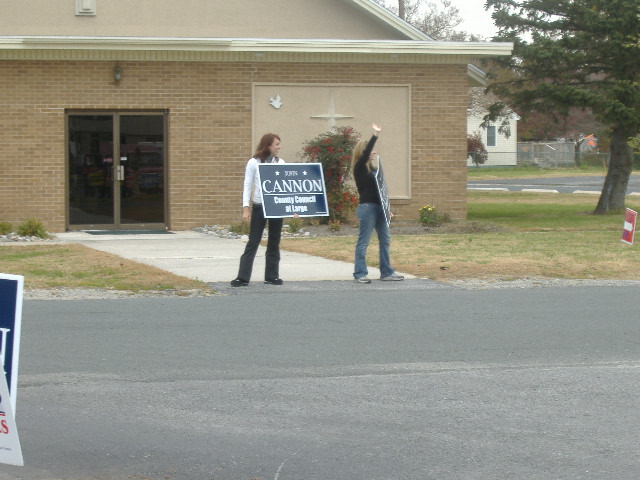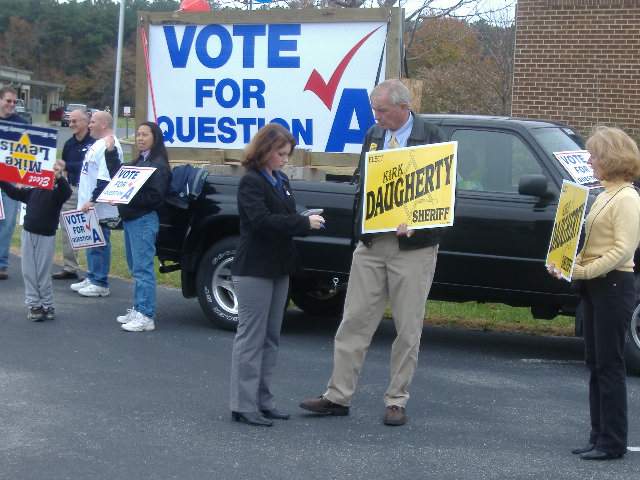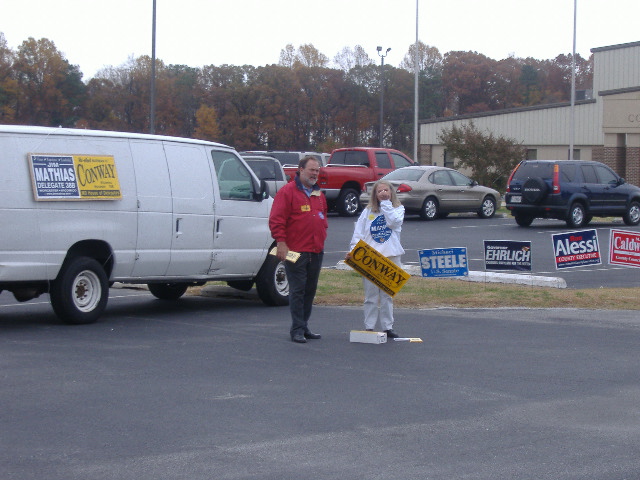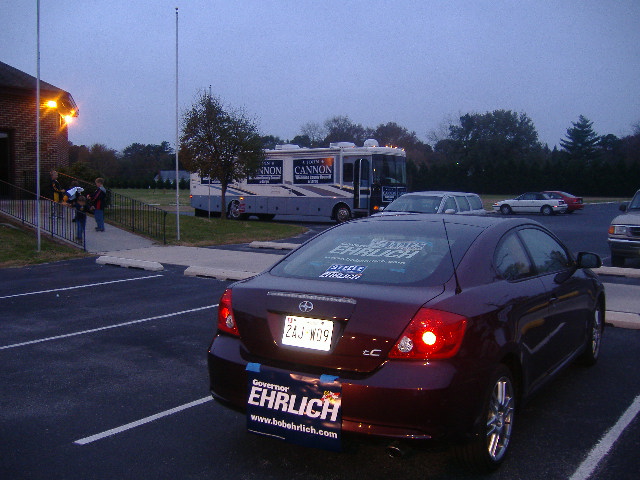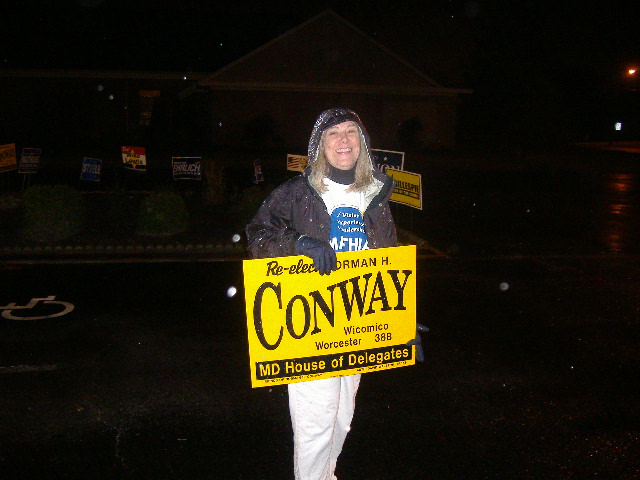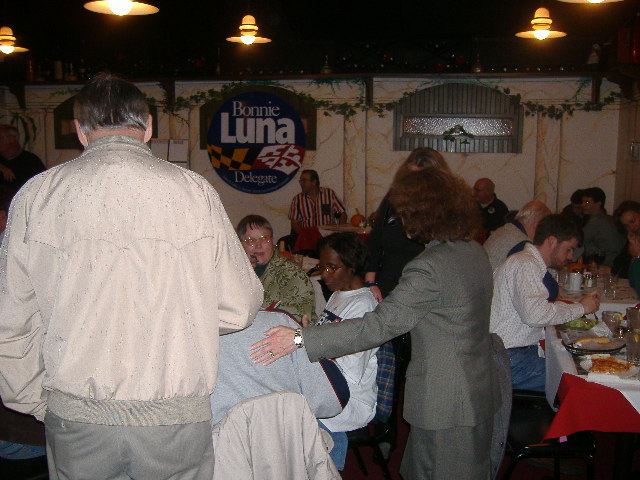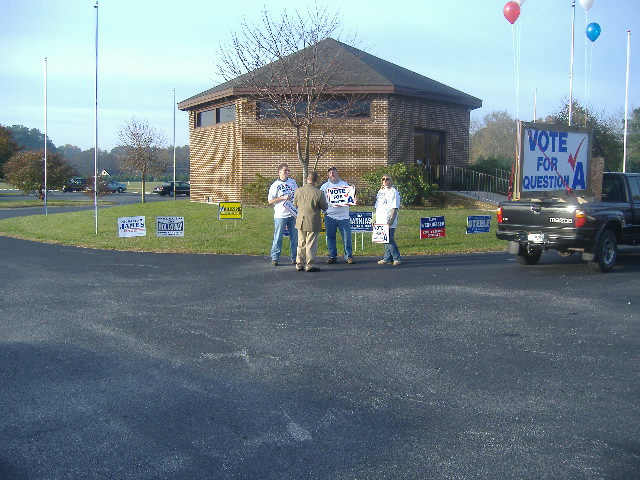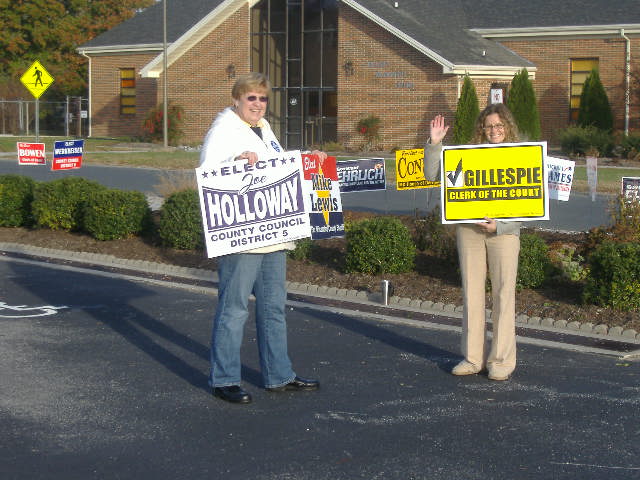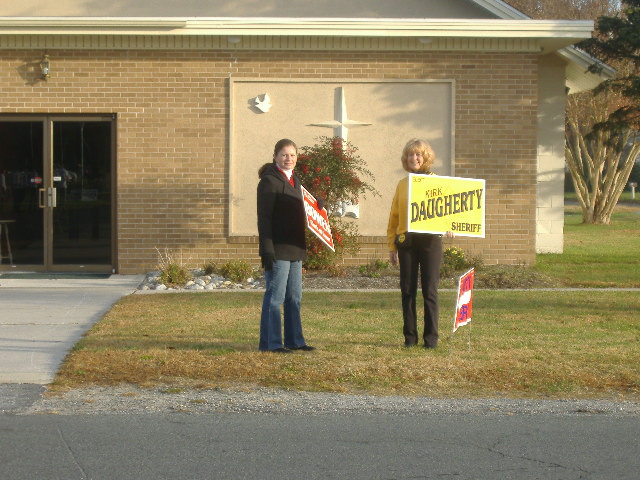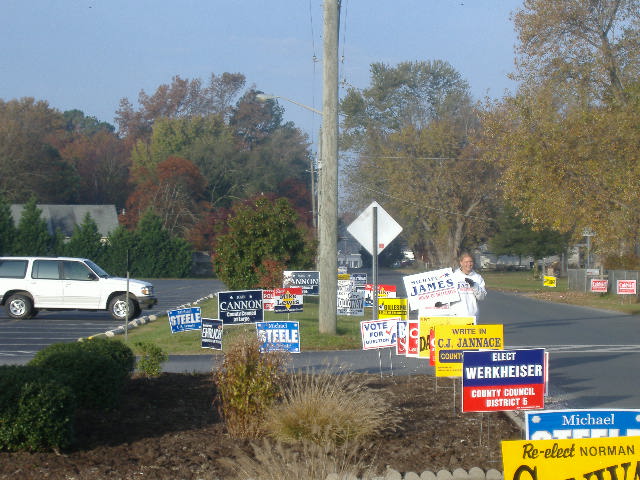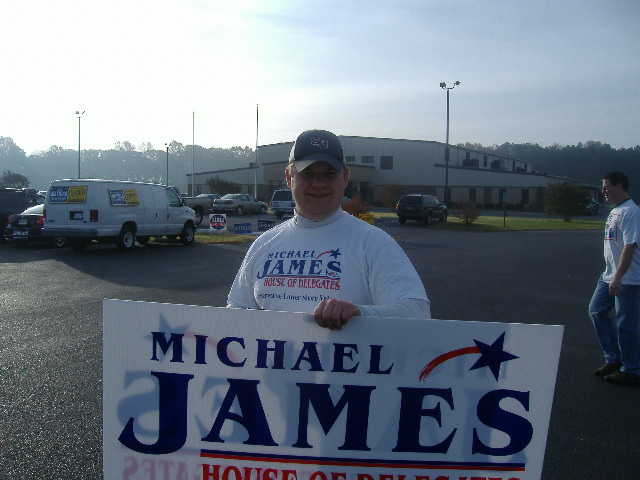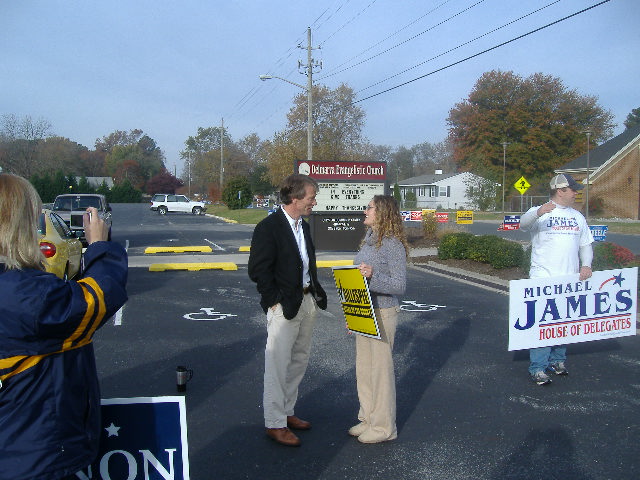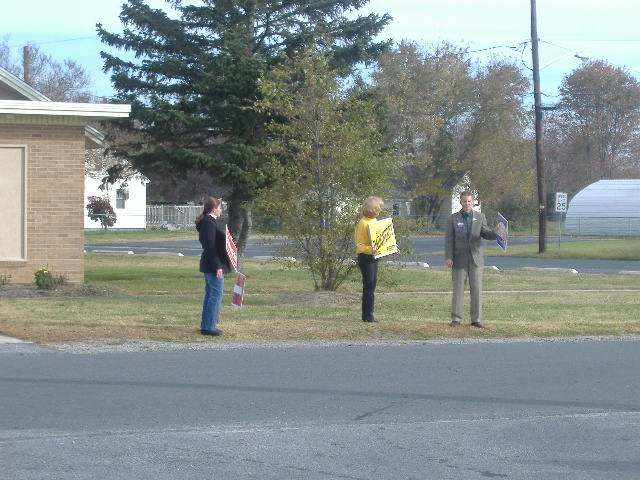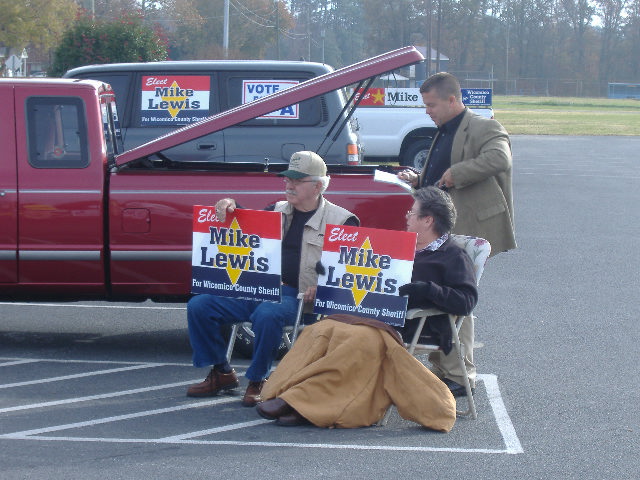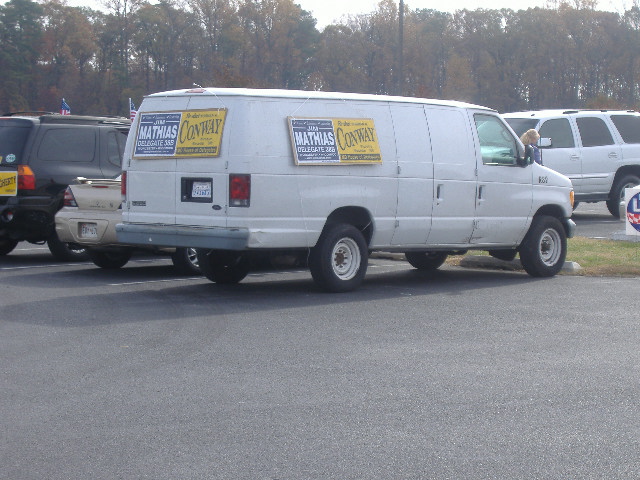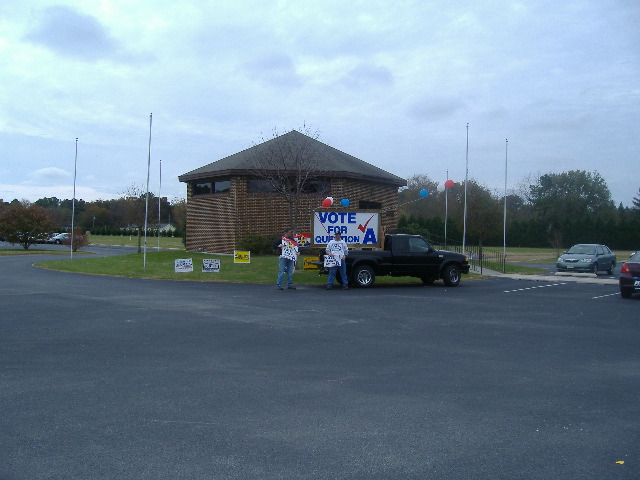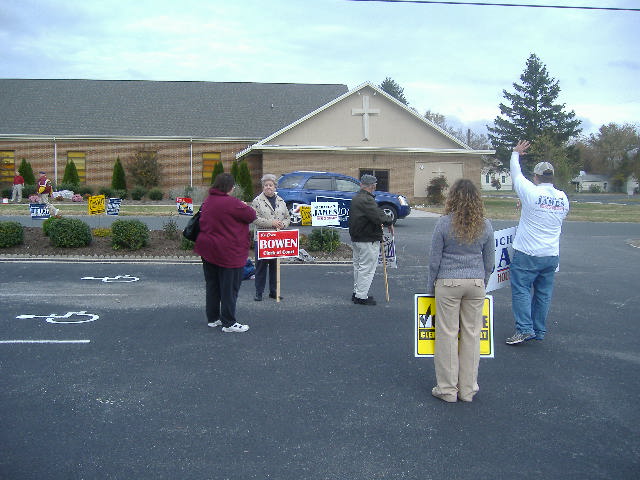Back in October I attended a forum here at Salisbury University sponsored by a group called PACE which featured three speakers from a think tank known as the Maryland Public Policy Institute. Sad to say, these three speakers were 1/3 of the people in the room, a fourth being the wife of one presenter, a fifth being the woman who runs PACE, and this blogger was a sixth. Yes, there were just six people sitting in a large room listening to these three, which is really too bad and shows a deplorable apathy in the Salisbury area.
I’d actually thought about doing this commentary about 3 weeks ago right after the event occurred but I decided to hold off until the election was decided, since it seemed more relevant as a look forward to the 2007 session of the General Assembly than as a pitch for any particular candidate or party. But the MPPI would probably be placed in the conservative side of the governmental argument, standing as they do for “free markets, limited government, and a civil society.”
As a “gift” for attending, I received the MPPI’s latest tome, called simply enough, “Maryland: A Guide to the Issues.” The 2006 edition is the second edition, and is probably a bit more suited for policy wonks than the public at large for the most part. But some of the issues covered in this volume are health care, public schooling and school choice, state budgetary demands, transportation needs for the DC/Baltimore metroplex, and public safety. The PACE/MPPI gathering looked mostly at the health care aspect but also touched on budgetary concerns. They also looked at a practice common in Maryland called “rent seeking” and gave examples I’ll explain at the end. (This is also covered briefly in the MPPI book.)
According to Marc Kilmer of MPPI, health care in the form of Medicaid takes up 27% of the state budget. This 27% accrues to the benefit of just 14% of Maryland residents. Kilmer argued that the state has “no incentive to cut Medicaid” since the federal government pays half the freight, thus help on this issue is needed concurrently from the federal level. (It’s probably not coming anytime soon with a Democrat-controlled Congress.)
Kilmer pointed out examples of successful Medicare reforms in other states that may be worth a look. In Florida, there’s a managed care model that provides a choice of health plans; meanwhile residents of South Carolina enjoy expanded health savings accounts and vouchers to help defray their medical expenses. While Marc cautioned that “structural reform (of Medicaid) is needed now” in Maryland, it appears that the first order of business in our state will be to pursue a Massachusetts-style health insurance mandate paid for by employers and portable between jobs within the state.
MPPI’s Tom Firey continued with this health care theme as he looked at the aspect of health insurance. He noted that this “impending health care crisis” had been the topic of no less than 400 bills introduced in the General Assembly between 2005 and 2006, most famously the “Wal-Mart” bill.
Tom spoke more about a measure adopted in a special session in late 2004 regarding medical malpractice insurance. The result of this special session was an HMO tax that would pay for a reinsurance fund that is to sunset in 2010 after payouts totaling about $120 million. The cause of this special session was two consecutive large premium increases from Maryland’s largest malpractice insurer. With doctors unable to change their payouts from the various health insurance providers to the degree necessary to absorb this increase, they had little choice but to drop out of various specialties, in particular obstetrics.
Unfortunately, Firey contended that this fund was little more than a way to hide the problem and punt it down the road. What Tom looked at most in his presentation was the conjunction of two items: the amount of court cases brought about by plaintiffs seeking relief for real or imagined problems, and the sheer number of medical errors that occur in this country on an annual basis.
He found that of all medical errors, which sport a rate that is “remarkably high” in the United States (the 8th largest killer as a matter of fact), only 1 of 7 ever reach the point where a lawsuit is attempted. Obviously there’s much less harm in accidentally giving a patient double the dose of Tylenol required on a single basis than there is in amputating the “good” leg and leaving the diseased one.
On the other side, cases that are brought to trial for real or perceived errors are found to have “no merit” 2/3 of the time. Firey compared this phenomenon to a two-chamber balloon – by squeezing the side of medical errors to encourage bad doctors to get out of the profession, you bog down the court system…but the flip side of tort reform may protect those poorly-performing doctors by discouraging lawsuits and allow their negligence to go unpunished.
What Tom suggested was an approach that encouraged competition on both sides once the reinsurance fund was terminated. By expanding competition within the plaintiff bar, that allows those who are victims of medical malpractice to see more of their settlements, instead of the bulk being swallowed up by attorney’s fees. With additional competition among insurers, good doctors who aren’t the target of frequent lawsuits could see their premiums decrease, while less skilled doctors would be able to pursue insurance but at higher cost, which is incentive to shape up or ship out of the medical profession. Another possibility that’s already in place in some states is what’s called a “bad baby” fund, where the state subsidizes parents who have the misfortune of having a child that’s a victim of malpractice. In return the parents stay out of the court system. While Tom has some misgivings about that use of government, he saw this fund as an idea worth consideration.
Firey also had some comments on the Massachusetts-style insurance bill that now seems destined for a date with our General Assembly come January 2007. He noted that of the 788,000 or so uninsured Marylanders, a bill like Fair Share (a.k.a. the Wal-Mart bill) would’ve only subtracted about 1,000 or so from that roll. To him, a Massachusetts plan mandating health insurance would be “awkward.”
As an example, take a healthy 25-year old. A person buys any insurance policy because they see it as a fair tradeoff – the expenditure of a sum of money on a regular basis in exchange for the safety net of a payout should that unlikely loss occur. In this healthy young person’s eyes, health insurance may seem unnecessary and they may want to spend their money on other items or save it for other long-term goals. Meanwhile, this healthy person may also be in his first job right out of college, and many’s the case where the choice is between, say, making a health insurance premium payment or a car payment. When a car is required to access gainful employment, it makes the choice simpler.
What Tom saw as better solutions can be boiled down into three bullet points:
Appreciate preferences. There’s just some folks who do not feel the need for carrying health insurance as they feel that the risk of a major medical calamity occurring to them is quite low, or at least low enough that they choose not to pay the premiums to obtain health insurance. As it turns out, many of the uninsured make several times the poverty level and may desire to pay cash for their occasional health care needs.
As a corollary to this, Allow lines of insurance tailored to the needs of uninsured. Maybe one who doesn’t carry any health insurance because all of the plans are “Cadillac” plans would be willing to buy a “Chevrolet” plan that essentially only covers catastrophic occurrences.
Thirdly, Use subsidies instead of mandates. The Massachusetts mandate “hides” the problem because it does little to encourage competition among insurers. Those chosen by the state have a captive audience, but if the insurance were subsidized that makes insurance companies try harder to gain customers and also opens up the possibility of outside insurers.
Regardless, the health care issue will be one that remains on the front burner for decades as Boomers age. One example of this was, where Medicaid in its infancy (1966) was a $1 billion item, by 2014 it will be a $635 billion item. Obviously that’s a lot of money changing hands and innovative ideas need to be implemented to help the cost of health care not blow governmental budgets and not be an anchor holding down the economy.
With regard to our upcoming state budgets, the third speaker, Christopher Summers, noted that Maryland faced a “serious fiscal crisis on Medicaid in 3-5 years.” This in addition to a possible $20 billion in unfunded pension liability that the state would face, not to mention the additional $1.3 billion mandated by the Thornton bill passed earlier this decade to fund Maryland schools. Summers told us that, while state revenues were expected to increase 25% by 2011, spending would zoom up 41% and 10% of that 25% increase in revenue would go to service debt. According to Christopher, in order for the state to deal with its structural deficit, personal income growth would need to double.
Summers blamed two simple factors for this onrushing freight train of financial doom – unchecked spending by the state government, and what he called a “leadership deficit.” Neither political party boasted a governor who was willing to make tough choices to address the long-term impact of excessive spending, instead using the increased revenues from a net inflow of jobs to continue a spending spree unabated for decades. Maryland has some of the most generous benefits around, and it’s becoming our own “third rail” of state politics.
While the bulk of the program dealt with the pocketbook issues of health care and budgetary concerns, Firey began the evening by speaking about something he calls “rent seeking.” Most readers of monoblogue would call it more simply, “corporate welfare.” In Fiery’s words, Maryland is the “worst state” in the country for this practice. After speaking of his dashed hopes about the recent movie “The Aviator” bringing more attention to this issue (in the movie’s TWA vs. Pan Am battle, which was based on actual events), he gave us a few examples of this political patronage.
Back around 2001, there was a concern from many gasoline dealers about incoming competition from stations like Sheetz and Wawa, who tended to sell gasoline at lower prices than these dealers could. So the establishment gas stations managed to get a bill passed mandating a minimum price for gasoline based on the local wholesale prices. This spelled the end of any meaningful gas wars, and are yet another factor in keeping prices artificially high. Three bills to end this practice were introduced in this year’s General Assembly session, none made it out of committee.
Another example that I posted about back in May is Maryland’s funeral home industry. Firey also noted the Institute for Justice’s involvement in attempting to overturn these laws in court (as I sat there nodding because I knew all about that), but I found out that the pretrial hearings had started that very week (which was late last month.) So hopefully the next issue of Liberty & Law will have more on this.
And then you have the “certificate of need” scam. Some of the broadest laws in the country regarding this are found in Maryland. These also stifle competition within the health care industry and contribute in part to the higher prices.
Finally, it was the Maryland liquor stores lining up to keep a chain called “Total Beverage” out of the state. Instead of doing this at the state level, though, they’ve managed to convince several of our counties that out-of-state companies would run them out of business. While none of the counties on the Eastern Shore are affected, it’s likely to be something seen in the near future.
It was a shame that many more people didn’t take advantage of this forum to learn about and get an idea of the impact that these issues are going to have in our state, particularly with the recent elections bringing in a governor who’s not going to be shy about spending taxpayer money, and lots of it. I know I’m not looking forward to “the Mick” reaching deeper into my back pocket.
But they still can get the same book I did, although it’ll cost them a few dollars to do so. While they didn’t spend a lot of time talking about this at the town hall meeting, a pet issue of the MPPI is school choice. If for nothing else than trying to create opportunities for Maryland parents to get their children out of the at best underperforming and at worst indoctrinating public schools, the MPPI deserves our commendation and support.
Certainly they deserve more attention than having just a handful of people who attended the forum.


